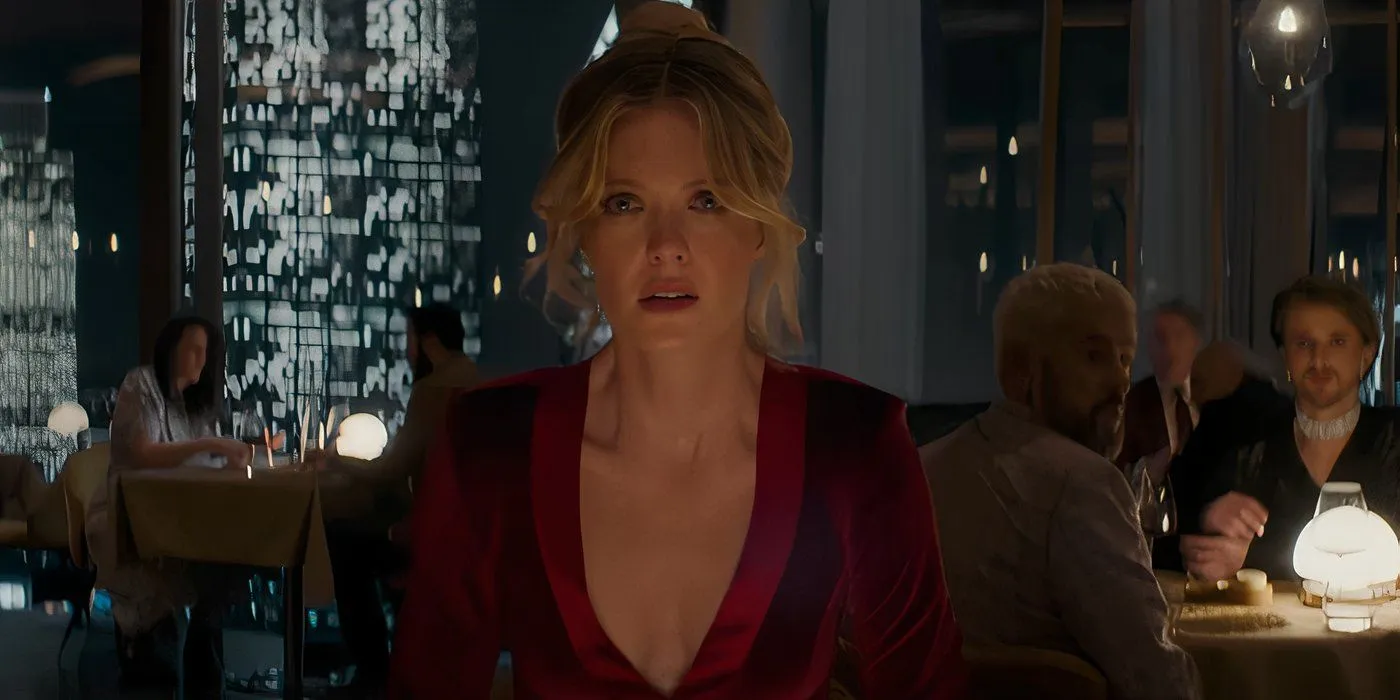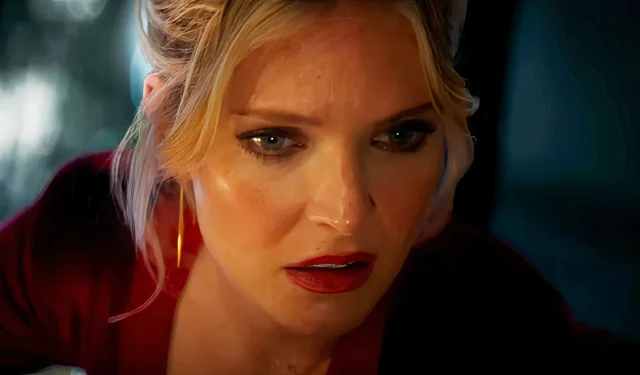This article addresses the topics of domestic violence and abuse, which may be triggering for some readers.
Warning: Spoilers for Drop ahead!
Significance of the Post-Credit Message in Drop
Drop is an exhilarating Hitchcockian thriller that captivates viewers with its suspenseful storytelling. The film features Meghann Fahy as Violet, a widowed single mother, who is stepping out for her first date after the tragic loss of her husband. What starts as a seemingly benign evening with a man named Henry quickly devolves into a nightmare when she becomes entangled in a blackmail scheme orchestrated by an unknown assailant who threatens her life unless she commits murder. This gripping narrative culminates in a high-octane conclusion that leaves audiences at the edge of their seats.
Despite its somewhat kitschy promotional material, Drop debuted in theaters with early screenings on April 9th, followed by a widespread release on April 11th. It has garnered positive reactions from both audiences and critics alike. A particularly impactful aspect of the film is its exploration of themes related to domestic violence, which are grounded in realism and resonate with many viewers. Rather than teasing a potential sequel, the film’s post-credit scene delivers a poignant message, emphasizing the importance of addressing these serious issues.
Critical Focus on Domestic Violence Awareness
The Creative Team’s Commitment to Social Responsibility


Midway through Drop, Violet attempts to seek help by accessing TheHotline.org, demonstrating the reality of domestic violence resources, including a chat feature for immediate assistance. Instead of a conventional post-credits sequence, the film thoughtfully presents contact information for domestic violence support services. This decision reflects a growing trend in cinema, where filmmakers are increasingly mindful of the societal implications of their work. Similar films, including Blink Twice and The Woman in the Yard, have also integrated hotline resources for viewers facing similar circumstances.
Why This Choice Was the Right Move for Drop
In-Depth Depiction of Abuse Dynamics

Although the film’s intricate plot, which revolves around a political conspiracy, holds the potential for sequels—suggesting that Henry may face new threats due to his revelations—prioritizing the distribution of domestic violence hotline information takes precedence. The film’s narrative is steeped in themes of abuse, making this choice even more impactful.
If you or a loved one is experiencing domestic violence, please reach out to 800-799-7233 (US) or visit TheHotline.org (US) or FindAHelpline.com (international) for assistance.
The film opens with a flashback depicting a domestic violence incident involving key characters, Blake, Violet, and Toby, which is referenced multiple times throughout the movie. Violet’s professional role as a mental health provider for survivors speaks volumes about her own traumatic experiences with various forms of abuse. During their dinner, both Violet and Henry candidly discuss their encounters with violence. Audiences who relate to these characters might find the hotline information invaluable, highlighting how such resources can be life-saving. This thoughtful message at the film’s conclusion elevates Drop to a more significant level of social awareness and responsibility.


